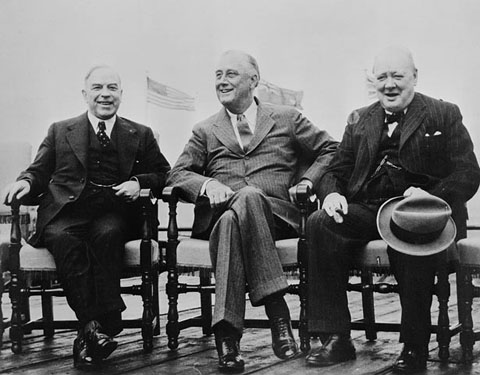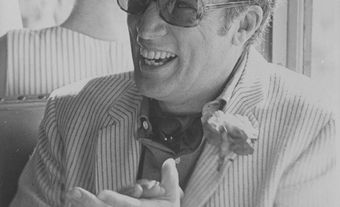The Liberal Party has dominated federal politics for much of Canada’s history, using the formula for success of straddling the political center developed under the leadership of Sir Wilfrid Laurier. Liberals have formed numerous governments and provided Canada with 10 prime ministers, but the party has also experienced defeat and internal divisions. In the election of October 2015, the party rose from third to first place in the House of Commons, winning a majority government under leader Justin Trudeau. The Liberals won a minority government in the 2019 election.
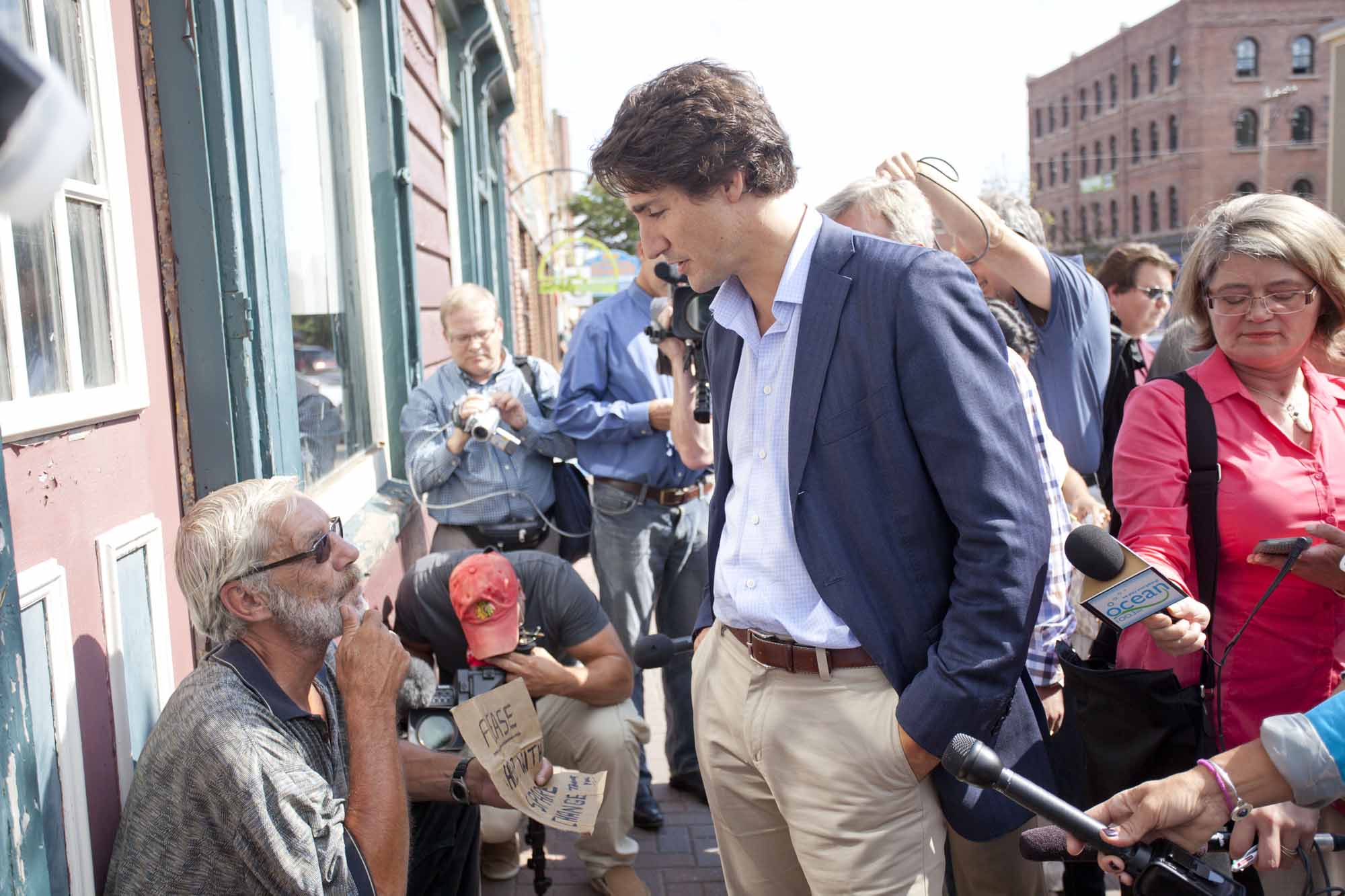
Origins of the Liberal Party
The Liberal Party of Canada has its roots in opposition parties that formed in the colonies of British North America, when representative assemblies were established in Nova Scotia (1758), Prince Edward Island (1773), New Brunswick (1784) and Upper and Lower Canada (1791). The parties developed in opposition to the oligarchies (small groups of elites) that controlled the colonial governments.
In Lower Canada (Quebec), a primarily francophone party (the Parti Canadien) advocated for responsible government — the idea that Cabinet could only govern if it enjoyed the confidence of the elected assembly. In 1826, it became the Parti patriote. Under its leader, Louis-Joseph Papineau, the party pushed for greater authority for the elected Legislative Assembly of Lower Canada, which it dominated. The party became more radical over time, as its ambitions were frustrated. Ultimately, this led to the failed rebellions of 1837–38. In Upper Canada (Ontario), the opposition party was known as the Reformers. Led by William Lyon Mackenzie, its more radical members also took part in the rebellions.
In the Maritimes, Joseph Howe led a 10-year struggle for responsible government that was finally successful in 1848. In the Canadas, an English-French political alliance was formed when Reformers in Upper Canada (under Robert Baldwin) joined with Reformers in Lower Canada (under Louis-Hippolyte La Fontaine) to form a government in 1842 and again in 1848 in the united Province of Canada. They won responsible government in 1848, shortly after it was granted in Nova Scotia.
The Reform Party in Upper Canada split in 1849 with the emergence of a radical faction known as the Clear Grits. The Grits believed that French Canadians had excessive influence in the government. Therefore, they pushed for representation by population, which would have assigned more seats to primarily English-speaking Upper Canada at the expense of French-speaking Lower Canada.
When moderate Reformers formed a coalition government with the Conservatives in 1854, the Clear Grits were left in opposition with the Parti rouge (as the Reform Party in Lower Canada was now known), led by Antoine-Aimé Dorion. The Reformers and Clear Grits came together under George Brown and adopted the Liberal name in 1857. Soon, the Liberals were the dominant party in Upper Canada. Though divided on issues like representation by population, they formed an uneasy alliance with the Rouges, which endured until Liberal leader George Brown joined the Great Coalition, the 1864 alliance that helped bring about Confederation.

Mackenzie and Laurier
After Confederation, the Liberals of Ontario, the Rouges of Quebec and the Reformers in the Maritimes formed a party under the Liberal name. They had little success against the political wiles of Conservative Prime Minister Sir John A. Macdonald and his federal coalition. Later, however, the Liberals developed successful provincial organizations. Following the downfall of Macdonald’s government over the Pacific Scandal, the stonemason Alexander Mackenzie formed Canada’s first Liberal government in 1873. A severe economic depression, and Mackenzie’s lack of political vision, led to Macdonald’s re-election in 1878 on a platform of trade protection. The resulting National Policy of tariff protection was vigorously opposed by Edward Blake, a Toronto lawyer and ex-premier of Ontario, who led the Liberal Party from 1880 to 1887. (Blake was the only federal Liberal leader, until the 21st century, never to become prime minister.)

Wilfrid Laurier was chosen party leader by a reluctant federal Liberal caucus upon Blake’s advice in 1887, and gradually broadened the party’s base in his home province of Quebec, where Laurier had risen to prominence preaching the virtues of racial conciliation. Capitalizing on the Conservatives’ mishandling of the Manitoba Schools Question, Laurier won the election of 1896 on a platform of provincial rights. He went on to win the next three elections by copying Macdonald’s formula — a nationwide coalition of forces and an accommodation between French and English Canadians. More traditional principles of Liberal reformism were tempered under Laurier with pragmatism and patronage.
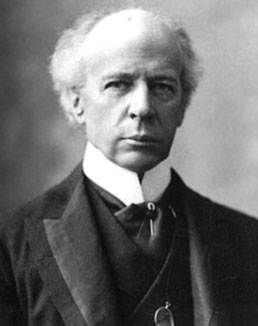
Laurier built his electoral coalition in English Canada on the organizational backs of Liberal provincial premiers, whom he brought into his Cabinet as power brokers for their regions. He endorsed the aggressive immigration policy of his Manitoba minister, Clifford Sifton, to settle the West, and he entered the same kind of transcontinental railway-building collaboration, with the Grand Trunk and Canadian Northern, that his caucus had denounced in the 1880s when it was championed by Macdonald.
Differences of principle still distinguished the Laurier Liberals from their Conservative opponents. In external affairs, the Liberals created the Royal Canadian Navy, rather than contributing to the British navy (see Naval Service Act). In commercial policy, Laurier achieved the long-held Liberal goal of a reciprocal trade agreement with the United States. It was a victory that proved his undoing: reciprocity alienated the protection-minded business community whose support he had cultivated, and the Liberals went down to defeat in the 1911 election in the face of the Conservative Party’s anti-Americanism. Laurier soldiered on as leader, watching in despair as the First World War military conscription issue nearly destroyed his party by temporarily shaking the solidarity of its English-French alliance.

King, St-Laurent and Pearson
William Lyon Mackenzie King assumed the Liberal leadership in 1919 and went on to become the longest-serving prime minister in Canadian history (1921-48 except for two periods in opposition, in 1926 and 1930-35). King’s Liberals led the country into the Great Depression and later, through the Second World War.
King’s political longevity has been ascribed to his uncanny capacity for blurring political issues to maintain support among such ideologically opposed groups as western free-trade farmers and protectionist manufacturers in central Canada; his shrewd recognition of the importance of sustaining Quebec support, especially during the Second World War; his talent for attracting to his Cabinet strong ministers with regional power bases and making the best use of their abilities and connections; and his success in presenting a progressive face to the electorate by gradually initiating social-welfare programs while mollifying the business community.

King’s hand-picked successor, Louis St-Laurent, was admired by the bureaucratic and business elites more than King had been, but because of St-Laurent’s disregard of party organization and his dependence on the Ottawa bureaucracy, his regime witnessed the collapse of King’s great Liberal alliance and the beginning of the party’s persistent alienation from Western Canada. Since St-Laurent’s narrow defeat by Conservative John Diefenbaker in 1957, the Liberal Party has been struggling to regain its previous high levels of support in the West.
It took Lester Pearson, a Nobel Peace Prize-winning former diplomat and secretary of state for external affairs—who became Liberal leader in early 1958—three elections before he won back federal power in 1963. It was largely thanks to the organizational skills and reformist convictions of his close adviser, Walter Gordon, that he was able to build the party organization. One price of Gordon’s organizational reforms was the further alienation of the West from what had become a Toronto-dominated party. Gordon received the credit for winning a minority victory in 1963 and then was blamed for recommending another election in 1965, which returned the Liberals as a minority government once more. Despite never achieving a majority, Pearson’s government accomplished much in its five years in office, creating a national medicare program, the Canada Pension Plan, and a distinctive Canadian flag.

Trudeau and Turner
Pierre Trudeau succeeded Lester Pearson in a hotly contested leadership campaign in 1968. Under Trudeau, French Canadians achieved a greater place within the party and the government of Canada than ever before. Trudeau’s dedication to federalism and his preoccupation with combating the separatist forces of Quebec nationalism, as well as his personal charisma, lay at the heart both of his early electrifying appeal to the public — a phenomenon known as Trudeaumania — and of the strong animosities he later generated among English-Canadian voters. Despite marked vacillations in the Liberal Party’s popularity, it managed to remain in office until 1979 and then again from 1980 to 1984 based on its strength in central Canada. Liberals, however, continued to scramble unsuccessfully to rebuild their position in the West. Under Trudeau the Liberals “patriated” the Constitution and introduced the Canadian Charter of Rights and Freedoms in 1982.
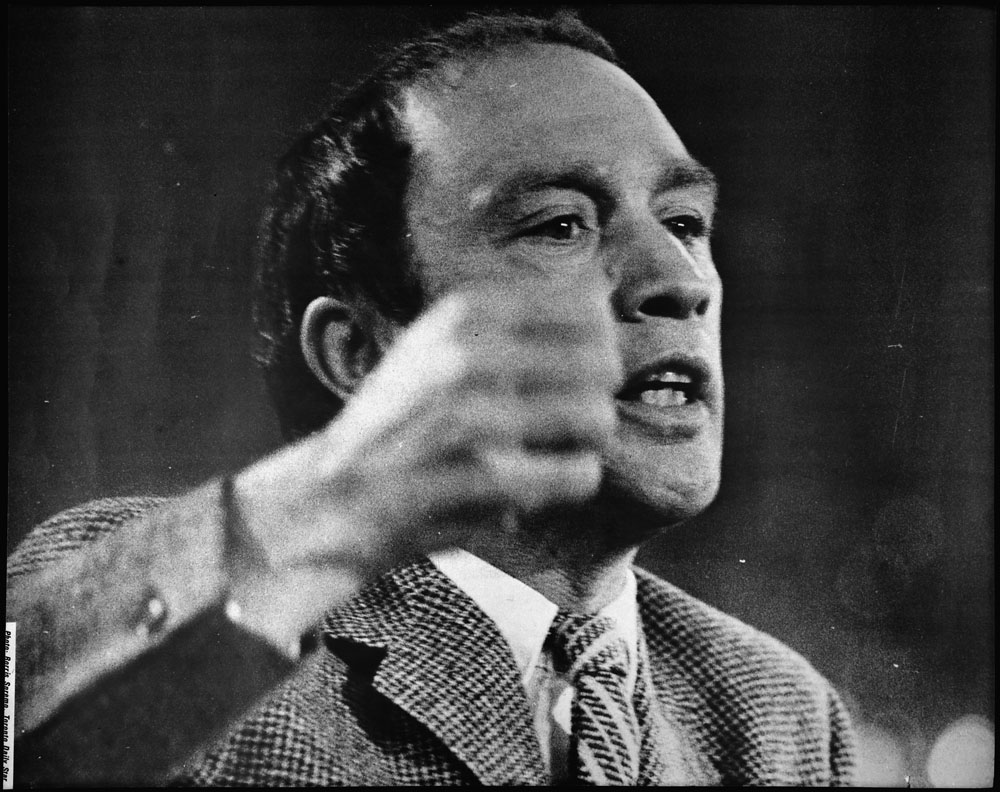
Trudeau stepped down as leader in 1984 and was succeeded by John Turner, his former minister of finance. Sworn in as prime minister on 30 June, Turner quickly called a general election, hoping to profit from the Liberals’ brief surge of popularity in the public opinion polls. Without an adequate organization or platform, and lacking an appealing personal campaign style, Turner led the party to a shattering electoral defeat — winning only 40 seats in the House of Commons, compared to 211 seats for the Conservatives. For the next four years, the party was plagued by organizational and ideological problems. In the 1988 election, Turner ran a strong campaign that appealed to nationalism, capitalizing on the anxiety generated by the Conservatives’ plan to sign a free trade agreement with the United States. He brought the party back to a respectable position in the House of Commons, winning 82 seats, before stepping down as leader.
Chrétien and Martin
When Jean Chrétien won the leadership in 1990, he inherited a party that was disorganized and almost bankrupt. His support of the Conservatives’ Charlottetown Accord cost the Liberals in Quebec, but by concentrating on policy development and organization, the Chrétien Liberals were well prepared for the election of October 1993. They emphasized job creation and released a detailed platform book that effectively answered criticisms that the party would return to the spending extravagances of previous Liberal governments. The campaign was a triumph, with the Liberals winning a clear majority of 177 seats. With the annihilation of the Progressive Conservative Party (which fell from 154 seats to two), the collapse of the NDP (which retained only nine of 43 seats), and the rise of the Bloc Québécois (which won 54 seats), Chrétien’s Liberal Party was the sole national party boasting representation in the House of Commons from every province. In the next two general elections (1997 and 2000), the Liberal Party was re-elected with majorities.

The Chrétien government embarked on a vigorous program, led by Finance Minister Paul Martin, to balance the federal budget. The government eliminated the $42 billion federal deficit, but at the cost of large cuts to social programs and to provincial transfer payments. Chrétien largely ignored Quebec nationalists, confident that he was providing good government and that this would be an effective answer to calls for Quebec sovereignty. The flaw in this approach was revealed in the 1995 Quebec referendum, which the federal side won by only the narrowest of margins. Chrétien’s response to this near defeat was the Clarity Act, in which the federal government declared that it would only negotiate Quebec’s separation after a strong majority had voted yes in a referendum based on a clear question.

As Chrétien’s time in office wore on, he faced increasing opposition from Liberal supporters of Paul Martin, his long-time rival. Fearing he might lose a confidence vote at a Liberal convention, Chrétien announced in 2002 that he would step down. Martin became party leader and prime minister in 2003, promising to strengthen health care, improve Canada’s position in international affairs, and address what he called the country’s “democratic deficit” by increasing the powers of ordinary MPs. Martin’s government, however, was immediately besieged by a scandal involving the misuse of federal advertising funds in Quebec during the Chrétien years. The new prime minister attempted to distance himself from the affair by appointing the Gomery Commission to investigate. In the election of 28 June 2004, the party was reduced to a minority in the Commons. Pursuing multiple priorities, Martin often appeared as a man unable to make decisions. The report of the Gomery Commission exonerated Martin of any wrongdoing in what became known as the Sponsorship Scandal, but the report confirmed allegations of corruption in both the bureaucracy and the federal Liberal Party’s Quebec wing. The party was defeated in the election of 23 January 2006. On election night, Martin announced his retirement as party leader.
Crushing Defeats
In December 2006, Liberals chose former Cabinet minister Stéphane Dion as their new leader. Dion inherited a disorganized and dispirited party that was also in debt after enduring years of internal strife between the Chrétien and Martin camps. In 2007 and 2008, the Liberals backed away from opportunities to defeat the minority Conservative government and force an election. Prime Minister Stephen Harper took the matter into his own hands by calling an election for 14 October 2008. The centrepiece of the Liberal campaign was the “Green Shift,” a promise to lower income taxes and raise a carbon tax on greenhouse gas emissions. It failed to capture public support, and the Liberals were reduced from 95 to 77 seats in the Commons. On 20 October, Dion announced his resignation as party leader.
When Parliament met in November, however, the opposition parties including the Liberals, agreed to vote down the government and ask the Governor General to appoint Dion as prime minister. To avoid defeat, Harper had Parliament prorogued until January. The Liberals then moved quickly to replace Dion, installing former journalist and academic Michael Ignatieff as leader.

Despite vigorous attacks on the Harper government, the Liberals were unable to gain traction under Ignatieff’s leadership. The party gambled in March 2011, combining with other opposition parties to bring down Harper’s minority government and force an election. NDP leader Jack Layton upstaged Ignatieff during the campaign. The Conservatives won the election and captured a majority government, with the Liberals finishing behind the NDP in third place, winning only 34 Commons seats — the worst showing in the party’s history. Ignatieff announced the next day that he would step down as leader. Bob Rae, a Liberal Member of Parliament and a former NDP premier of Ontario, became interim Liberal leader later in the month, while Liberals began a period soul-searching about the weaknesses that had reduced Canada’s once-dominant federal party to a distant third-place position.

Justin Trudeau
In 2008, Justin Trudeau, a former schoolteacher and the eldest son of Pierre Trudeau, was elected to Parliament. In 2013, Trudeau won the leadership of the party in a landslide leadership vote—the first in the party’s history in which social media played a major role in selecting a new leader After becoming leader, Trudeau made controversial comments about the possibility of Quebec separation, and for admitting that he smoked marijuana while he was an MP. Yet he remained popular, rekindling memories of his father’s political charisma.
In the 2015 election campaign, Trudeau overcame public doubts, fueled by the Conservatives and NDP, that he was too young and inexperienced to be prime minister. He distinguished the Liberals from their opponents by promising new spending and investment in the economy — rather than tight spending limits and balanced budgets — and he became a chosen figure of change for voters seeking an end to nine years of Conservative rule under Stephen Harper. The Liberals won a majority government, and Trudeau became Canada’s 23rd prime minister.

Trudeau immediately made headlines by forming a Cabinet composed of an equal number of women and men, a first in Canada. In its first two years, Trudeau’s government admitted 40,000 Syrian refugees to the country. It cut the personal income tax rate on middle-income earners while increasing it for wealthier Canadians. Revisions to the Canada Pension Plan raised contribution rates and reduced overall tax savings for many, but the changes also increased the benefits for retirees.
The Liberals also carried out significant reform of the Senate. In opposition, Trudeau had promised to work toward a non-partisan Senate. New senators now sit as independents, not as members of a party caucus. Within two years, the independents outnumbered Conservative senators, who had formed the largest caucus in the chamber.
The Trudeau government legalized assisted dying in certain circumstances, legalized marijuana, implemented a 10-year, $55 billion National Housing Strategy and created the Canada Child Benefit for low- and middle-income families. The government also launched the National Inquiry into Missing and Murdered Indigenous Women and Girls.
To fight climate change, the Trudeau government encouraged provinces to implement measures to reduce greenhouse gas emissions. In 2019, the federal carbon tax came into effect in Saskatchewan, Manitoba, Ontario and New Brunswick, as the governments of those provinces had not created their own carbon pricing plans. However, the Liberals have also been criticized by environmental activists for their decision to approve the Trans Mountain Expansion Project, which would expand petroleum exports from the Alberta’s oil sands (see Pipelines in Canada).
The Liberals faced significant challenges in foreign affairs, particularly in Canada’s relations with the United States, China and Saudi Arabia. While Trudeau enjoyed a good relationship with American President Barack Obama, his interactions with President Donald Trump (elected in 2016) were strained. The challenge came both from Trump’s unpredictability and his threat to cancel the North American Free Trade Agreement (NAFTA). Protracted negotiations led to an agreement in November 2018: the Canada–United States–Mexico Agreement (CUSMA).
In December 2017, Trudeau embarked on a trip to India that was intended to promote trade talks. The visit resulted in only minor trade deals but was disastrous from a public relations standpoint. Some reports mocked Trudeau for dressing in fancy costume and speculated that he had been snubbed by the Indian prime minister, Narendra Modi, due to Trudeau’s alleged support for Sikh separatism. Furor erupted when it was revealed that Jaspal Atwal, a former member of an illegal Sikh separatist group and convicted attempted murderer, had been invited to an official Canadian function with the prime minister. The prime minister’s office explained that it had not vetted the list, as was usual practice. It immediately rescinded the invitation. Towards the end of the visit, Trudeau met with Modi and with Amarinder Singh, chief minister of Punjab. While Trudeau announced that he supported a united India and opposed extremism, he also maintained that the Canadian government would not limit freedom of speech for non-violent Sikh nationalists at home. This continued the stance taken by Conservative prime minister Stephen Harper.
The Trudeau government has also faced significant challenges in its relationship with China. On 1 December 2018, Canadian officials arrested a Chinese citizen, Huawei executive Meng Wanzhou, at the request of the U.S. government. The arrest led to a protracted diplomatic conflict between China and Canada. While China demanded the release of Meng Wanzhou, Trudeau’s government maintained that they had to respect judicial independence. Within two weeks, Chinese authorities had arrested two Canadians — former diplomat Michael Kovrig and businessman Michael Spavor — and accused them of espionage. China also ordered the retrial of Canadian Robert Schellenberg, and on 14 January 2019 sentenced him to death for drug smuggling. The Trudeau government accused China of arbitrarily applying the death sentence and asked for clemency. Trudeau and Chrystia Freeland, Minister of Foreign Affairs, appealed to other leaders to increase pressure on China. However, John McCallum, Canada’s ambassador to China, stated that Meng Wanzhou could make a strong case against extradition. McCallum was fired in January 2019 and later replaced by Dominic Barton. On the economic front, China has blocked Canadian exports of pork, canola and soybeans.
Relations with Saudi Arabia also became strained under Trudeau’s government. In 2018, Trudeau and Freeland were openly critical of human rights abuses in Saudi Arabia. Freeland imposed sanctions against 17 Saudi citizens who were suspected of being linked to the murder of Saudi journalist Jamal Khashoggi. At the same time, Canada had a multi-billion-dollar deal to export Canadian-made, light-armoured vehicles (LAVs) to the country. The Liberals faced mounting pressure from Canadians to cancel the agreement, which had been signed by the previous Conservative government under Stephen Harper and approved by the Liberals.
On the domestic front, Trudeau and the Liberal government were accused of political interference in a case against Vice-Admiral Mark Norman. Norman had been charged with breach-of-trust for allegedly leaking confidential information, but the charge was stayed in May 2019. Norman’s legal team accused the Liberal government of deliberately withholding relevant documents from the original investigation, and for interfering in the prosecution against Norman — charges the government denied.
The party faced a major setback in the third year of Trudeau’s mandate. In early 2019, two ministers resigned from Cabinet: former Minister of Justice and Attorney General Jody Wilson-Raybould and former Minister of Indigenous Services Jane Philpott. Wilson-Raybould alleged that the prime minister and his staff had interfered with the justice department’s prosecution of engineering firm SNC-Lavalin. The company was accused of fraud and bribery in its dealings in Libya. Public opinion polls showed a substantial drop in support for the Liberal Party, with the Liberals trailing the Conservatives by more than 10 points in some surveys. Still, by the beginning of summer, the party had recovered much of the support it had lost earlier in the year.
Trudeau’s Liberals won a minority government in the federal election held on 21 October 2019. Compared to the 2015 election, the party lost support in every province, particularly in the prairies, where Alberta and Saskatchewan did not elect a single Liberal MP. The Liberals also lost the popular vote, receiving only 33 per cent compared to the Conservatives at over 34 percent. However, the Liberal Party won 157 seats in total, giving it a relatively strong minority.
Internal Disputes
As with any broadly based party, there are always small but significant groups that oppose the dominant view of the leadership. In British Columbia in the 1950s, many provincial Liberals formed an electoral coalition with the right-wing Social Credit movement, to the dismay of the federal party. In the 1960s, Ross Thatcher, the Liberal premier of Saskatchewan, strongly opposed the welfare liberalism of Prime Minister Lester Pearson. Both conflicts damaged the federal party’s credibility in the West. Since the 1960s, all provincial Liberal parties have established separate organizations and have often pursued policies at odds with the federal party.
Throughout the party’s history there has also been tension between the forces of continentalism and nationalism within Liberal ranks. It became most obvious during the 1960s when Walter Gordon led the effort to limit the growth of foreign control in the economy (see Foreign Investment). Though he faced many setbacks, Gordon continued to push his ideas within the party, unlike other dissidents, such as James Richardson and Eric Kierans, two Cabinet ministers who quit the Trudeau government over policy issues (language policy for Richardson, economic policy for Kierans).
In the late 1970s and early 1980s, there were left-right tensions in the party, chiefly between Pierre Trudeau and John Turner and their respective followers. Turner quit his post as minister of finance in 1975, and then played the role of Liberal dauphin-in-exile for almost a decade.
Later disputes in the party had less to do with policy than leadership. Internal conflicts developed after the party’s 1984 convention, in which Jean Chrétien placed second to Turner. Turner’s supporters accused Chrétien of undermining the new leader behind the scenes. Similar accusations emerged from the Chrétien camp after he defeated Paul Martin for the leadership in 1990. Tensions continued throughout Chrétien’s term as prime minister, culminating in his announcement in 2002 that he would step down.

Financial Support
The Liberals traditionally raised election campaign money from big business and, to a lesser extent, small entrepreneurs (see Party Financing). After the introduction of the Election Expenses Act (1974), reliance on business funding declined in favour of tax-deductible member donations and direct subsidies from the public purse ( see Party System). Corporate contributions all but disappeared in 2004 with the introduction of new legislation on political financing, which banned corporations and trade unions from contributing to political parties. In 2004, corporate and trade union contributions to individual candidates were strictly limited and then, in 2006, banned. To make up for the shortfall, parties began receiving public funding based on the number of votes they received in the previous general election. The Liberals relied heavily on the subsidy, which ended in 2015.
Politics of Pragmatism
The Liberal Party dominated Canadian politics throughout much of the 20th century. It survived in the 1920s, a time when its namesake was collapsing in Britain, and in the 1990s, when “liberal” was a derogatory term in the United States. The party’s success has reflected its ability to occupy the political centre, while showing ideological suppleness. This flexibility has allowed it to argue for increased government spending in one era and balanced budgets in the next, to support free trade in some periods and vigorously condemn it in others.
In the late decades of the 20th century, its emphasis on tolerance appealed to immigrants and urban voters and allowed the party to portray its opponents in English Canada as small-minded. In Quebec, the rise of the Bloc Québécois and, later, the NDP created a major challenge, making it difficult for the Liberals to maintain their traditional hold on the province —once the core source of its power. However, in the 2015 election, the Liberal Party proved once again that its flexible, centrist message still resonates in Quebec and much of the rest of Canada.

| Name | Term (yyyy.mm.dd) |
| Justin Trudeau | 2013.04.14 - |
| Bob Rae (Acting) | 2011.05.25 - 2013.04.13 |
| Michael Ignatieff Made permanent leader at the party national convention held in Vancouver, British-Columbia. The delegates voted 97 percent in favour of his leadership. | 2009.05.02 - 2011.05.24 |
| Michael Ignatieff (Acting) | 2008.12.10 - 2009.05.01 |
| Bill Graham (Acting) Designated interim leader until a new leader was elected in December 2006. | 2006.03.20 - 2006.12.01 |
| Paul Edgar Philippe Martin Sworn in as Prime Minister on December 12, 2003. | 2003.11.14 - 2006.03.19 |
| Joseph Jacques Jean Chrétien Sworn in as Prime Minister on November 4,1993. | 1990.06.23 - 2003.11.13 |
| John Napier Turner Sworn in as Prime Minister on June 30, 1984. | 1984.06.16 - 1990.06.22 |
| Pierre Elliott Trudeau Sworn in as Prime Minister on April 20, 1968 and subsequently on March 3,1980. | 1968.04.06 - 1984.06.15 |
| Lester Bowles Pearson Sworn in as Prime Minister on April 22,1963. | 1958.01.16 - 1968.04.05 |
| Louis Stephen St-Laurent Sworn in as Prime Minister on November 15, 1948. | 1948.08.07 - 1958.01.15 |
| William Lyon Mackenzie King Sworn in as Prime Minister on December 29,1921 and subsequently on September 25,1926 and October 23,1935. | 1919.08.07 - 1948.08.06 |
| Daniel Duncan McKenzie (Acting) Following Laurier's death in February 1919, caucus members chose Daniel Duncan McKenzie to serve as acting leader until the 1919 convention. | 1919.02.17 - 1919.08.07 |
| Wilfrid Laurier Sworn in as Prime Minister on July 11,1896. | 1887.06.23 - 1919.02.17 |
| Edward Blake | 1880.05.04 - 1887.06.02 |
| Alexander Mackenzie Sworn in as Prime Minister on November 7,1873. | 1873.03.06 - 1880.04.27 |

 Share on Facebook
Share on Facebook Share on X
Share on X Share by Email
Share by Email Share on Google Classroom
Share on Google Classroom


